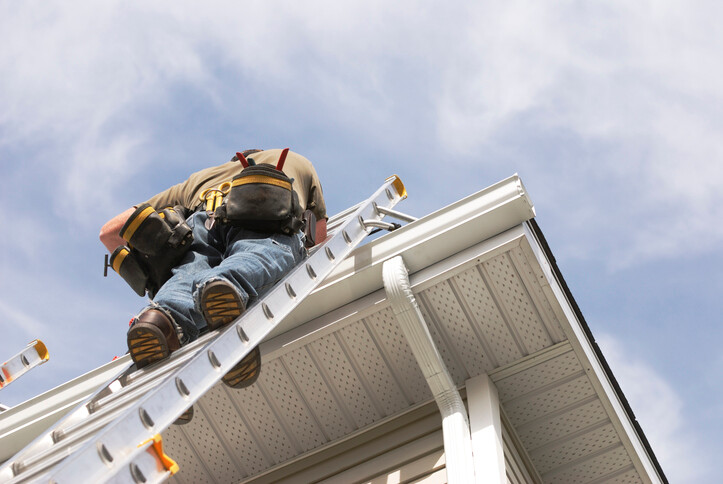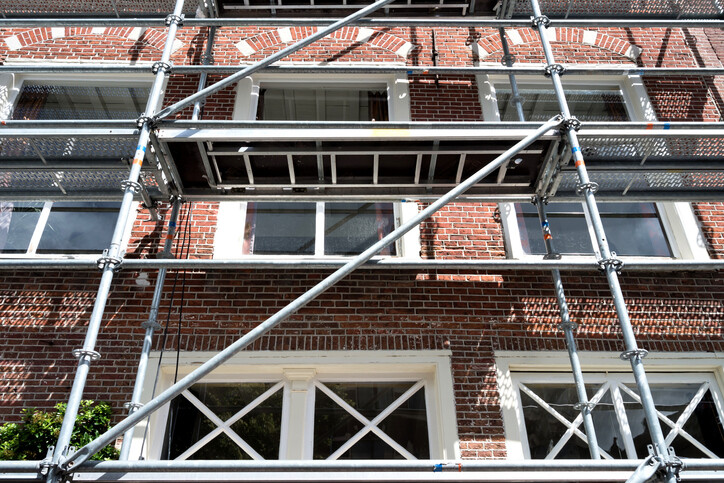 Selecting the right manual access equipment is crucial for ensuring both safety and efficiency in any project. Whether you are working on construction, maintenance or decorating, having the proper equipment will enhance productivity and reduce the risk of accidents. This guide explores three key types of manual access equipment: trestles and staging, access towers and ladders. Remember that Paragon Tool Hire can help you determine the best equipment for your projects in the Buckingham area, so feel free to get in touch.
Selecting the right manual access equipment is crucial for ensuring both safety and efficiency in any project. Whether you are working on construction, maintenance or decorating, having the proper equipment will enhance productivity and reduce the risk of accidents. This guide explores three key types of manual access equipment: trestles and staging, access towers and ladders. Remember that Paragon Tool Hire can help you determine the best equipment for your projects in the Buckingham area, so feel free to get in touch.
Assessing Your Project's Needs
Before choosing manual access equipment, consider the following factors:
Height Requirements: Identify the height at which you need to work. Different tasks require different access solutions. For instance, if you are painting a ceiling in a standard room, a step ladder may be sufficient. However, if you are installing signage on a multi-story building, an access tower would be necessary.
Duration and Frequency: Short-term projects may benefit from quick setup options like ladders, while long-term tasks may require stable platforms like scaffolding.
Work Environment: Assess the available space, ground stability and indoor or outdoor conditions to determine the best choice. If you are working in a cramped hallway, a compact step ladder may be more practical than a full staging setup. Conversely, if you are working on an uneven outdoor surface, an access tower with adjustable legs could provide better stability.
Trestles and Staging
What Are Trestles and Staging?
Trestles are A-frame or adjustable metal or wooden supports that hold up a horizontal work surface, such as a wooden plank or staging board. Staging refers to the temporary platform created by placing a sturdy board between two trestles. This setup provides an elevated, stable work area for tasks that require movement across a horizontal plane.
Trestles and staging are commonly used in painting, plastering, bricklaying and other tasks that require access to a wider surface area at an elevated height. They are particularly useful for projects that involve repetitive motion across a broad area, such as applying wallpaper or ceiling repair.
Advantages
- Provides a broad, stable surface for working at height: Unlike ladders, which limit movement to a confined space, staging allows users to move freely along a platform. For example, a painter working on a large wall can easily maneuver back and forth without having to climb up and down repeatedly.
- Adjustable height options to suit different tasks: Trestles can be set at different heights to match specific job requirements.
- Can accommodate multiple workers at once: Staging provides ample space for two or more workers to operate side by side. This is particularly beneficial for tasks such as ceiling installations, where one worker can hold materials in place while another secures them.
Considerations
- Requires sufficient space for setup: Trestles and staging need a stable, flat area for proper assembly. If you are working in a narrow corridor or a cluttered workspace, a ladder may be a more practical option.
- Proper assembly is crucial to maintaining safety standards: If trestles are not securely positioned or if the staging board is not rated for the weight being placed on it, the structure could collapse. For example, using a weak board that cannot support the weight of two workers and their tools could result in a hazardous situation.
Access Towers
What Are Access Towers?
Access towers, also known as mobile access towers, or scaffold towers, are freestanding, mobile structures that provide a stable and secure working platform at height. These towers consist of a metal frame with a series of platforms and guardrails for safety. They are commonly used in construction, maintenance and repair work where prolonged access to an elevated area is required.
Advantages
- Highly stable and secure: Unlike ladders, access towers such as the Interlink Stairspan offer a much larger working surface and are equipped with guardrails, reducing the risk of falls. This makes them ideal for tasks such as exterior wall repairs or installing overhead ductwork.
- Adjustable height: Many access towers can be built to various heights depending on the job requirements.
- Mobile and easy to reposition: Most access towers are fitted with lockable castor wheels, allowing users to move them easily.
- Supports multiple workers and equipment: The spacious platform allows multiple workers to collaborate efficiently, and they can hold tools, materials and even heavy-duty equipment.
Considerations
- Requires assembly: Unlike ladders, access towers take time to set up and dismantle. If your project requires frequent changes in height or quick access, a ladder may be a more practical solution.
- Needs a stable ground surface: Access towers should only be used on level, firm ground. If the work area is on an incline or has uneven terrain, additional stabilisation equipment may be needed.
- Larger storage space required: Because of their size, access towers require more storage space compared to ladders and trestles when not in use.
Ladders
Ladders and their Uses
Ladders are a versatile type of manual access equipment designed for quick and easy elevation. They come in various forms, including step ladders, extension ladders and roof ladders, each suited to different tasks. Ladders are widely used in construction, maintenance, decorating and home improvement projects.
- Step ladders are self-supporting and can be used for tasks such as changing light bulbs, installing shelves or indoor painting.
- Extension ladders require a stable surface to lean against and are ideal for reaching greater heights, such as for gutter cleaning or exterior painting.
- Roof ladders feature hooks to secure them onto a roof, making them essential for roofing repairs and inspections.
Advantages
- Portable and easy to transport: Ladders such as our 32' aluminium ladder are lightweight and can be quickly moved between locations.
- Simple to set up and adjust: Unlike trestles and staging, ladders require minimal setup time. A homeowner trimming a tree can simply extend an extension ladder and lean it against the tree for immediate use.
- Suitable for a variety of tasks and environments: Ladders are effective in confined spaces, such as stairwells or small rooms, where staging would be impractical. They are also useful for quick jobs like retrieving items from high shelves.
Considerations
- Extension ladders require a stable structure for support: Unlike step ladders, extension ladders must lean against a wall or other surface. If the surface is weak or unstable, such as an old fence, the ladder could collapse.
- Potential for instability on uneven ground: Using a ladder on an uneven surface, such as a sloped driveway, can pose a significant risk. In such cases, stabilizers or adjustable-feet ladders should be used.
Safety Guidelines
 General Tips
General Tips
- Inspect all equipment before use to ensure it is in good condition.
- Always maintain three points of contact when climbing ladders.
- Set up access equipment on level and stable ground.
Specific Precautions
- Trestles, Staging and Access Towers: Ensure all components are securely fastened, and the platform is free from obstructions.
- Ladders: Position extension ladders at the correct angle (around 75 degrees) and avoid overreaching.
Why Choose Paragon Tool Hire
Paragon Tool Hire offers a comprehensive range of high-quality manual access equipment to suit a variety of projects. With a commitment to safety and reliability, we provide well-maintained trestles, staging, access towers and ladders to ensure you can work efficiently and securely. Our expert team is available to offer guidance on selecting the best equipment for your needs. For more information or for equipment hire in the Buckingham area, please get in touch on 01280 822282.
